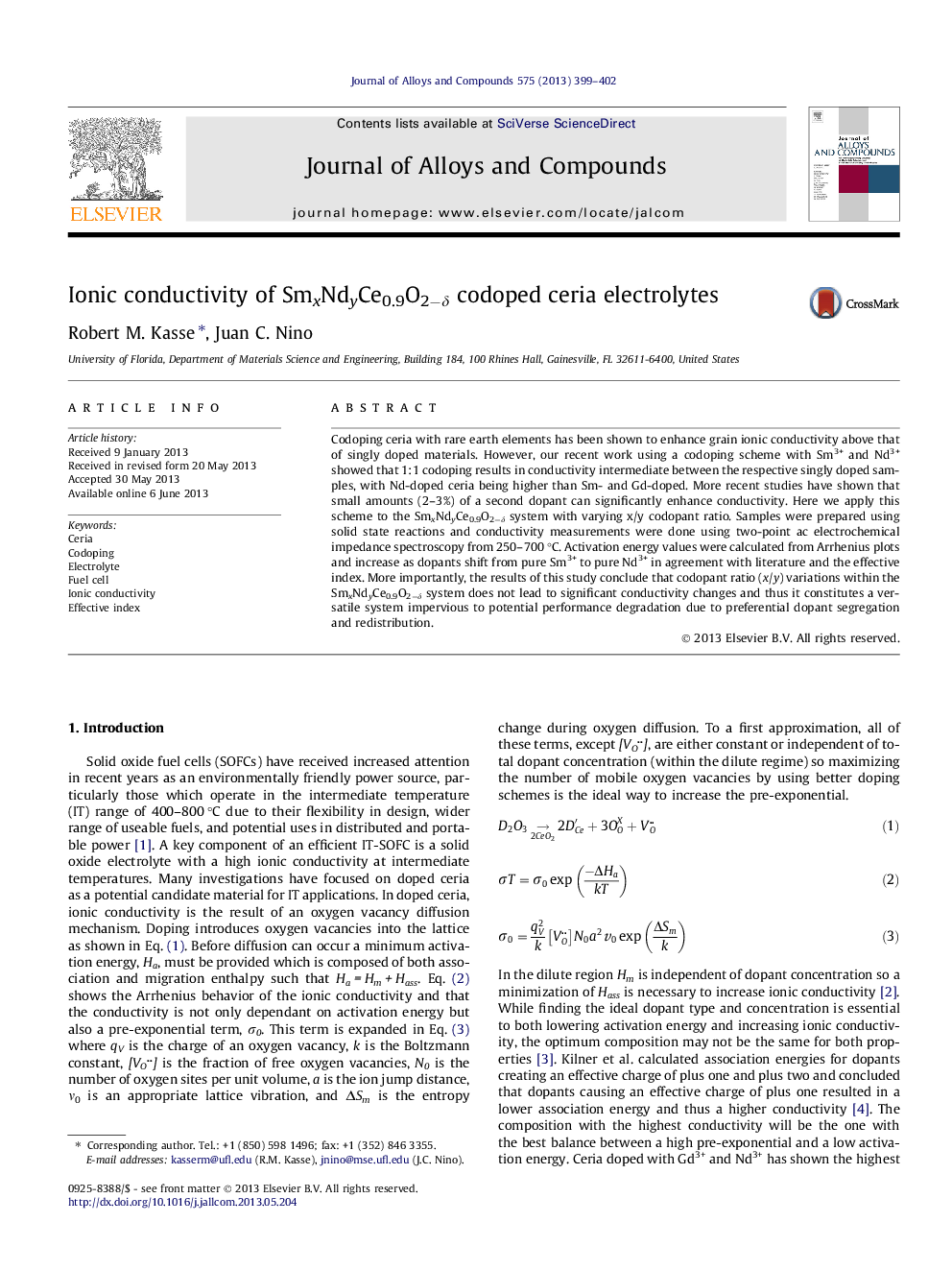| Article ID | Journal | Published Year | Pages | File Type |
|---|---|---|---|---|
| 1613514 | Journal of Alloys and Compounds | 2013 | 4 Pages |
•We report the ionic conductivity of SmxNdyCe0.9O2−δ (0, 0.0125, 0.025,…, 0.1) for the first time.•We report that the SmxNdyCe0.9O2−δ system is very compositionally flexible.•We report that the ionic conductivity of the system studied follows the theory of effective index.
Codoping ceria with rare earth elements has been shown to enhance grain ionic conductivity above that of singly doped materials. However, our recent work using a codoping scheme with Sm3+ and Nd3+ showed that 1:1 codoping results in conductivity intermediate between the respective singly doped samples, with Nd-doped ceria being higher than Sm- and Gd-doped. More recent studies have shown that small amounts (2–3%) of a second dopant can significantly enhance conductivity. Here we apply this scheme to the SmxNdyCe0.9O2−δ system with varying x/y codopant ratio. Samples were prepared using solid state reactions and conductivity measurements were done using two-point ac electrochemical impedance spectroscopy from 250–700 °C. Activation energy values were calculated from Arrhenius plots and increase as dopants shift from pure Sm3+ to pure Nd3+ in agreement with literature and the effective index. More importantly, the results of this study conclude that codopant ratio (x/y) variations within the SmxNdyCe0.9O2−δ system does not lead to significant conductivity changes and thus it constitutes a versatile system impervious to potential performance degradation due to preferential dopant segregation and redistribution.
